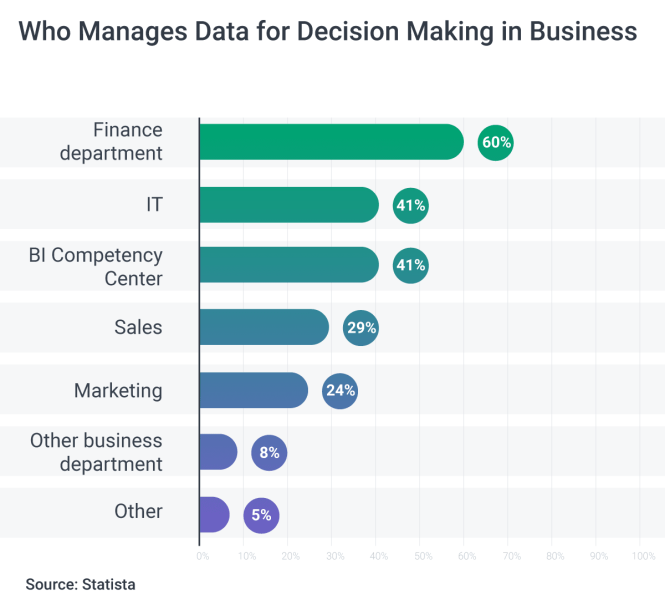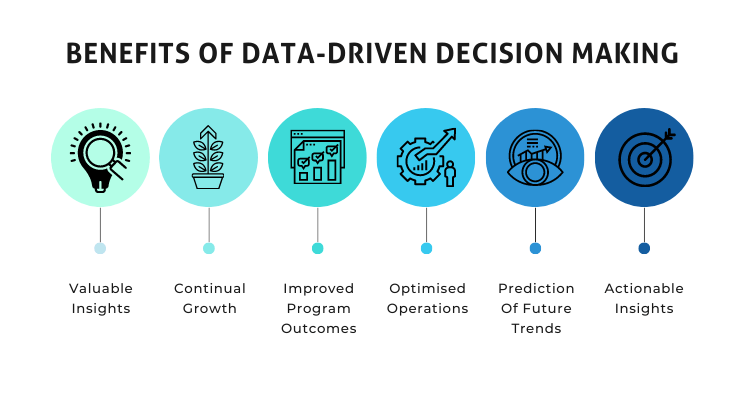

Building data-driven sales strategies is no longer an option but a necessity for businesses striving for success in today’s competitive landscape. Companies that ignore the power of data are essentially flying blind, leaving valuable opportunities on the table and falling behind competitors who understand the importance of leveraging data. This article will delve into the essential aspects of building data-driven sales strategies. We will explore how to use data analysis to make smarter decisions, tailor your approach to the specific needs of your target audience, and create a more robust sales process. It also explains how to refine your forecasting, track sales performance, and maximize your ROI. We will cover the critical steps, including data collection, analysis, and implementation.
Understanding the Importance of Data in Sales
The Power of Data-Driven Decisions
Data-driven sales strategies leverage market research, customer behavior analysis, and sales performance metrics to inform decision-making. Rather than relying on assumptions or guesswork, these strategies use concrete data to identify trends, patterns, and areas for improvement within your sales processes. By understanding these patterns, companies can allocate resources more effectively, streamline operations, and ultimately achieve greater efficiency.
Identifying Challenges in Traditional Sales Approaches
Traditional sales methods often rely on intuition and experience. Without a comprehensive analysis of customer behavior and sales data, these methods often leave room for error and missed opportunities. For instance, a company may be missing out on a crucial market segment due to insufficient market research or struggling with a high customer churn rate without understanding customer pain points from a data-driven perspective. These issues can be identified and addressed through a systematic approach to data collection and analysis.
Unveiling Sales Opportunities through Data Analysis
Data analysis identifies potential sales opportunities that would be difficult to find through traditional methods. By tracking customer behavior, preferences, and buying patterns, businesses can identify specific needs and tailor their sales messages and products to target those needs. Data analysis techniques, such as segmentation analysis, enable sales teams to focus their efforts on the most promising leads, increasing conversion rates and ultimately, maximizing revenue potential.
Data Collection and Analysis Techniques
Gathering Relevant Sales Data
An essential element in building data-driven strategies is data collection. Companies must identify the data points most relevant to their sales process, such as customer demographics, purchase history, website activity, and social media interactions. The data collected needs to be reliable and accurate. To ensure the data integrity, implementing robust data collection systems and processes is crucial.
Advanced Data Analysis Techniques
Advanced analytical techniques are critical in extracting actionable insights from collected data. Techniques like segmentation analysis, trend identification, and predictive modeling help to uncover hidden patterns and trends. For example, segmentation analysis can help target specific customer groups and refine your sales approach to resonate with each segment. Trend identification can warn of emerging market trends to better anticipate future changes and challenges.
Utilizing Data Visualization Tools
Data visualization tools are extremely valuable in making complex data easily understandable. These tools can transform raw data into visually appealing charts and graphs, making it easier to identify patterns and trends. Tools such as Tableau and Power BI can highlight critical insights for your sales team, enabling them to focus on areas for improvement and capitalize on opportunities.
Implementing Data-Driven Sales Strategies
Tailoring Sales Messages to Specific Customer Segments
Segmentation analysis allows businesses to identify different customer groups with distinct needs and preferences. This information can then be used to tailor sales messages, product offerings, and marketing campaigns to resonate more effectively with each segment. This personalized approach boosts customer engagement and satisfaction.
Optimizing Sales Processes with Data Insights
By analyzing sales data, businesses can identify bottlenecks and inefficiencies in their sales process. For example, understanding the typical sales cycle duration and identifying any delays in the process allows companies to streamline procedures. Data insights can also optimize sales team productivity, improving their effectiveness and output.
Tracking Key Metrics to Measure Success
Establish key performance indicators (KPIs) to measure the effectiveness of your data-driven strategies. This allows continuous monitoring and adjustment of your tactics. Metrics such as conversion rates, average deal size, and customer lifetime value (CLTV) are critical for evaluating ROI.
Forecasting and Managing Sales Pipelines
Predictive Modeling for Accurate Sales Forecasting
Predictive modeling techniques allow for the estimation of future sales performance using historical data and insights. This gives businesses a more accurate view of potential sales revenue and allows for proactive planning. By using data, you can project sales and refine your planning, enabling better allocation of resources and a stronger anticipation of market needs.
Optimizing Sales Pipelines Through Data Analysis
Analyzing sales pipelines helps in identifying potential areas for improvement. Analyzing each step in the sales process, from lead generation to closing a deal, allows for the identification of potential bottlenecks and inefficiencies. Implementing adjustments based on these insights can streamline the sales pipeline, improving the chances of closing deals and generating leads.
Implementing Automated Sales Processes
Automating sales processes using software tools can significantly increase productivity. Tools such as CRM systems or automated email marketing sequences can track data, identify patterns, and automatically trigger follow-ups and nurturing campaigns, which are important for increasing sales opportunities.
Case Studies and Examples
Case Study 1: XYZ Corporation
XYZ Corporation successfully increased sales by 25% by implementing a data-driven sales strategy. By segmenting customers based on purchasing behavior and tailoring marketing messages, XYZ was able to increase customer engagement and conversion rates. Data visualization tools provided clear insights into sales performance, facilitating quick adjustments to sales strategies.
Case Study 2: ABC Company
ABC Company streamlined its sales process by analyzing sales pipeline data. The company identified bottlenecks and inefficiencies, then made adjustments to automate tasks. This approach increased sales productivity by 15%. They implemented specific CRM software for sales team efficiency and better track of prospects and potential clients.
Data-Driven Insights for Better Decisions
These examples showcase the power of data-driven insights in making sound business decisions. By understanding customer behavior and identifying trends, companies can make informed adjustments to their strategies, improving profitability.
In conclusion, building data-driven sales strategies is crucial for success in today’s competitive market. By leveraging data analysis, you can gain valuable insights into customer behavior, market trends, and sales performance. Remember to continuously monitor and adapt your strategies based on the data. Implementing these insights leads to more effective sales campaigns, improved customer relationships, and ultimately, better ROI. Ready to transform your sales strategy? Download our free guide to data-driven sales today!